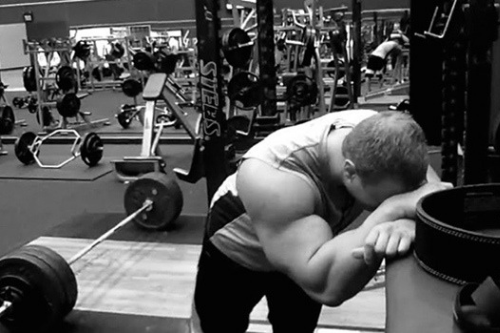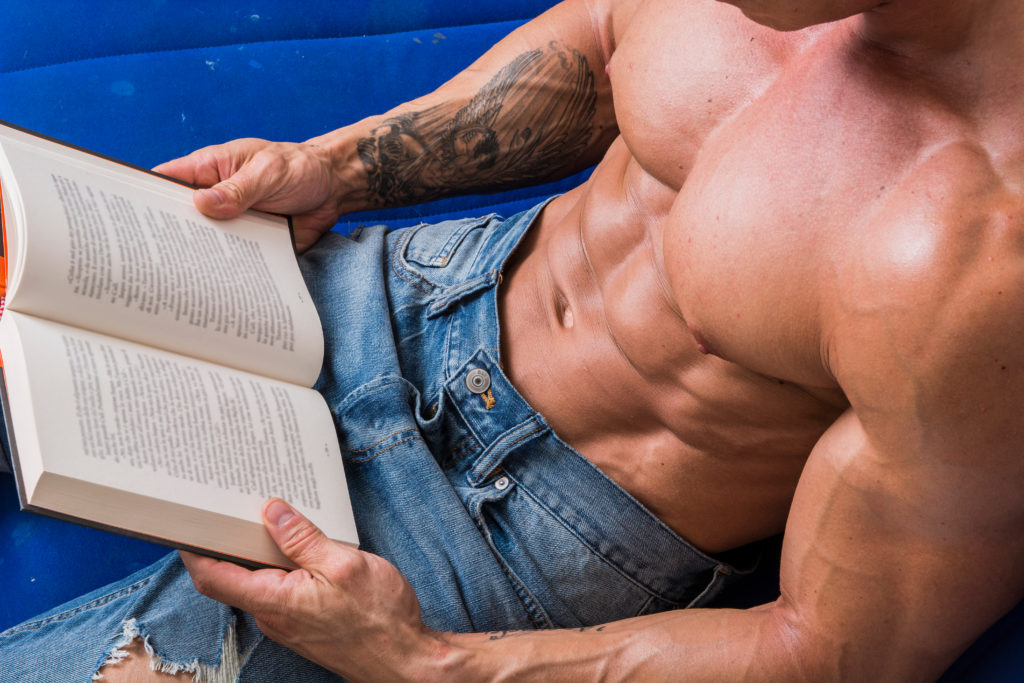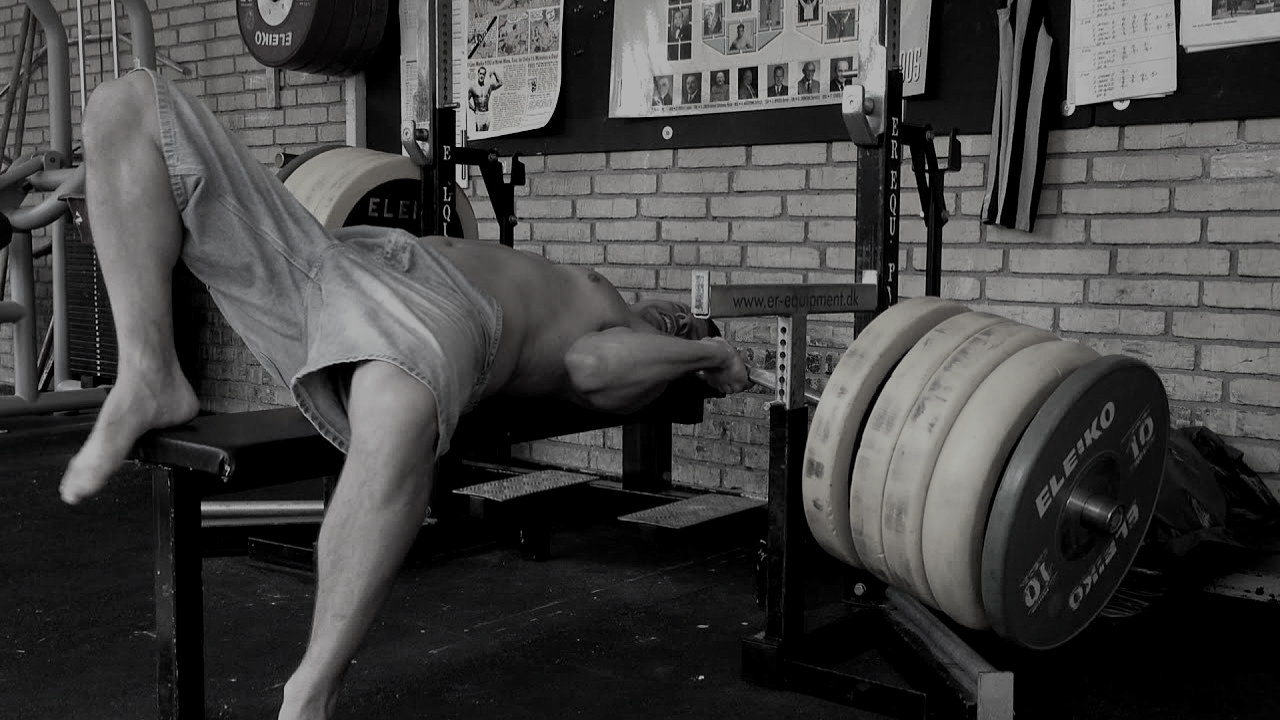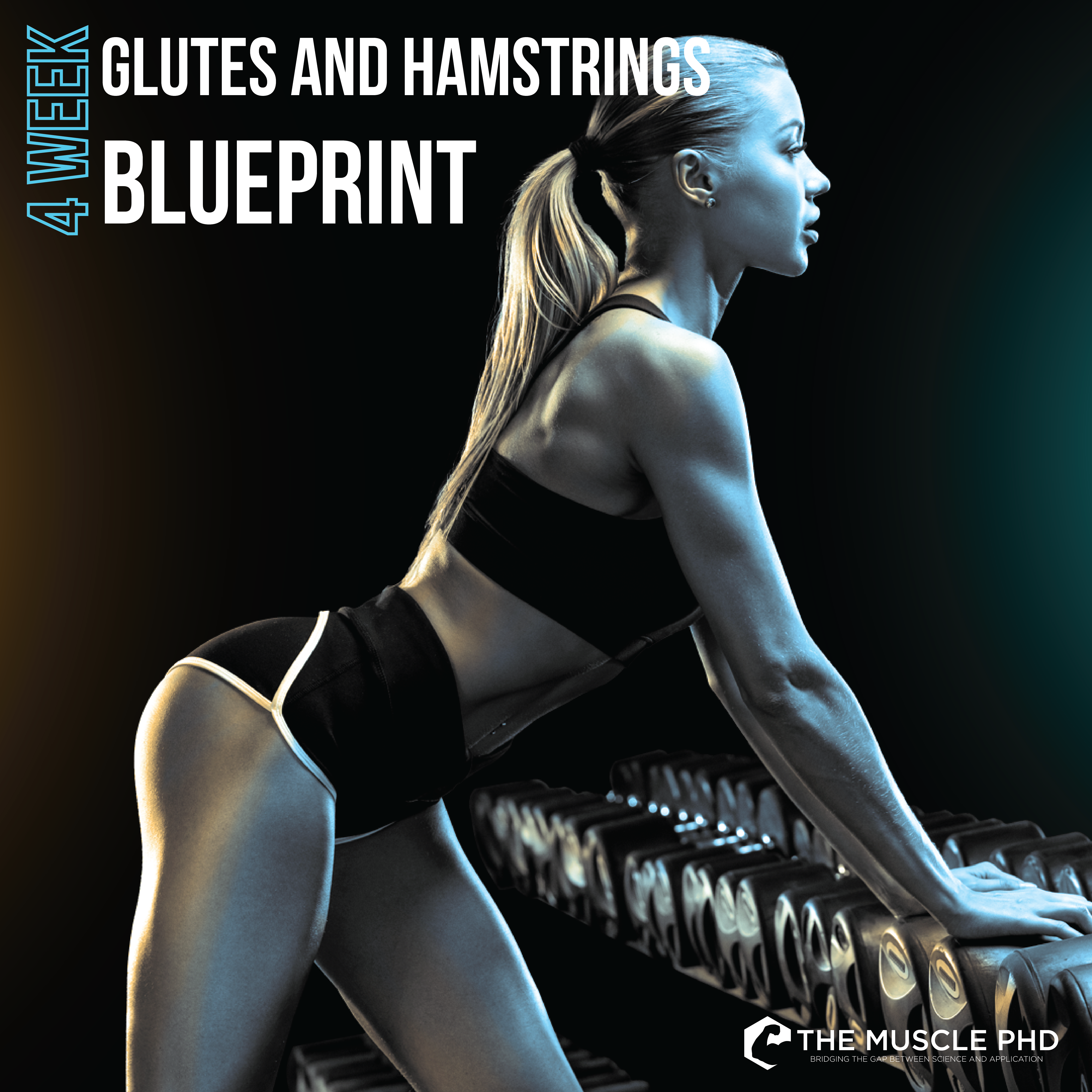Introduction
For those of you who are out of the loop, recently I teamed up with The Vitamin Shoppe’s Wellness Council to help provide more evidence-based training and nutrition recommendations to their readers. The Vitamin Shoppe is a fantastic company dedicated to helping people reach their fitness and health goals and I highly recommend checking them out for all of your supplement needs (here). In the mean time, I’ll also publish the articles I write for them here so that all of the readers on The Muscle PhD platform get to benefit from this partnership as well. Stay tuned, big things are going to come from The Vitamin Shoppe’s Wellness Council!
Now, let’s get into the subject matter of this article: bodybuilding mishaps. At face value, building muscle seems like a simple process. Just pick things up and put them down, right? While that simplicity works great for beginners, moving into the intermediate and advanced levels of training requires a much smarter approach. Let’s cover some of the most common mistakes that people make in this process and how you can avoid those issues in your own training.
1. Frame of Reference
 This might sound odd, but knowing how quickly you can gain muscle and how much muscle that you, personally, can gain might help a lot in your muscle building efforts. We know that the majority of people workout in order to improve their appearance (6), but the problem with this is that you constantly compare your current physique against your goal physique. While having a goal can absolutely help progress, constantly comparing yourself to this ideal can actually hamper efforts and add more stress to your training and/or diet.
This might sound odd, but knowing how quickly you can gain muscle and how much muscle that you, personally, can gain might help a lot in your muscle building efforts. We know that the majority of people workout in order to improve their appearance (6), but the problem with this is that you constantly compare your current physique against your goal physique. While having a goal can absolutely help progress, constantly comparing yourself to this ideal can actually hamper efforts and add more stress to your training and/or diet.
Therefore, instead of constantly comparing your current state to your future state, start to reference your, “today,” pictures against progress pictures from months ago. Seeing how much progress you have already made is much more motivating than looking at how far you still have to go.
For some people, fully following through on this method means you might have some un-following to do on social media. Do you follow fitness models for #motivation? That might not actually be that motivating if you’re constantly comparing yourself to them, let alone the reality that the use of Photoshop in many fitness pictures can paint an unattainable aesthetic. Keep your frame of reference to your progress, rather than your goals, and it will be much easier to continue moving forward.
2. Not Enough Training Variation
This is a huge one I see all of the time. Often times, training gains stall because people get stuck doing the same workout over and over again. Do you always walk into the gym and do the same workout for legs, back, chest, etc.? If so, eventually your gains are going to stall. We refer to this as the biological Law of Accommodation, which states that the adaptation (gains) to a stimulus (workout) will slow and eventually stop if the stimulus is constantly presented (2) – i.e. you do the same workout over and over again.
This is easy to understand by covering how I used to train the bench press when I first started lifting in early high school. I wanted massive pecs, so I would always work up to 135lbs and then try to get as many reps as I could at that weight. That was a great method for a few months, but eventually my gains stalled. Why? Well, I wasn’t providing anything new for my muscles to adapt to! I kept offering them the same challenge which meant that they didn’t have to grow or get stronger to better handle that challenge.
Once I switched it up and used dumbbells and incline bench for a month or two, my bench press shot up by about 50-pounds. Don’t get stuck in the same routine!
3. Prioritizing Abs over Gains
 A huge issue I see with many novice or intermediate bodybuilders is the fact that they value being lean over having muscle. That’s perfectly fine if you’ve developed an amount of muscle that you’re happy with, but often the issue is that these individuals will say that they want to gain muscle but don’t want to get fat. With this in mind, they often eat in calorie deficits and struggle to make meaningful gains.
A huge issue I see with many novice or intermediate bodybuilders is the fact that they value being lean over having muscle. That’s perfectly fine if you’ve developed an amount of muscle that you’re happy with, but often the issue is that these individuals will say that they want to gain muscle but don’t want to get fat. With this in mind, they often eat in calorie deficits and struggle to make meaningful gains.
Now, it is possible to gain muscle without having to eat your face off, but that’s not easy and can take quite some time. If you want to build serious muscle, you’re going to have to do some eating and your midsection might soften up a bit during this process. However, performing strategies like calorie cycling (3) and eating high protein diets (1) can help reduce fat gain during clean bulks so that you preserve some of those precious ab lines when gaining muscle.
At the end of the day, everyone agrees that having a sick set of abs is impressive. However, if you have a stick-thin pair of arms to go with those abs, then you’re not exactly ripped; you’re just skinny. Don’t be afraid to spend some time with the fork and knife in order to grow. Ask any successful bodybuilder or powerlifter and they will not hesitate to tell you that learning how to eat big was the biggest difference maker in their training progress.
4. Not Eating Enough Protein
The problem with offering evidence-based advice about protein intake for maximizing muscle growth is that many research studies do not reflect the real world training practices that many bodybuilders follow. In fact, we see studies like Witard et al. (2013) in which a relatively small amount of protein was able to maximize muscle growth, but yet studies like Macnaughton et al. (2016) show that individuals undergoing more intense training need more protein to maximize growth. So what gives?
The problem is that many scientific reviews on protein intake analyze studies with older subject populations, poor training protocols, or low quality proteins. This leads to claims saying that consuming ~0.75 grams of protein per pound of bodyweight every day is enough to assist in muscle growth while undergoing training (5). However, in the fine print of these reviews, the authors state that individuals looking to maximize muscle growth are better off consuming 1 gram of protein per pound of body weight (5) as they will be performing more intense, full-body training much more consistently. Therefore, getting the most applicable information out of these reviews requires reading past the abstract – something that even many fitness professionals struggle to do.
The latest review on protein intake and bodybuilders agrees that people looking to maximize muscle gains should consume at least 1 gram of protein per pound of bodyweight (7). Therefore, if you’re looking to get the most gains out of your training program, eating a high protein diet is more than likely necessary. The best part is that protein is highly thermogenic, so adding calories to your diet through protein will likely aid in fat burning and may help recomposition efforts (1,9).
5. Periodization
 Related to the point about training variation, periodization is simply planning long term variation into a training program. Therefore, to develop a periodized training plan, you’re going to have to sit down and plan out your training blocks at least a month or two in advance. You can break these down into individual workouts and all sorts of highly complex variables that are well outside the scope of this piece.
Related to the point about training variation, periodization is simply planning long term variation into a training program. Therefore, to develop a periodized training plan, you’re going to have to sit down and plan out your training blocks at least a month or two in advance. You can break these down into individual workouts and all sorts of highly complex variables that are well outside the scope of this piece.
So how would you periodize training for muscle growth? The best way to promote growth is to plan different training volumes for each time you hit a muscle group. So, let’s say in a given two week period you hit 4 leg days. In a periodized routine, one of those days would be heavy, strength work, two of those days would be more moderate volume, and one day would be a light weight, high rep kind of day. This method is known as non-linear periodization and has been shown to be more effective for promoting gains in muscle size than linear periodization (8) (linear periodization would be simply increasing weight while decreasing reps throughout a training cycle).
Why is this method more effective? We have to remember that we have multiple types of muscle fibers, and these different types of muscle fibers are going to respond differently to different types of training. Therefore, a linear program that only focuses on increasing weight will likely not cause much growth in certain muscle fibers, whereas a non-linear program that includes high rep days will also cause these specific fibers to grow. This can be especially effective in the muscles of the lower body that contain a greater mix of fiber types as opposed to most upper body muscles.
In addition to the fiber type component, we also get back to the Law of Accommodation. The volume of a training program is the most biologically stressful component (2). Volume can be calculated by multiplying: sets x reps x weight lifted for every exercise in a session and then adding it up. The more volume you perform in a session, the greater stress your muscle fibers endure – assuming you’re not just flinging around 5lb dumbbells for hundreds of reps, of course. Therefore, in a linear program, you’re constantly applying about the same amount of stress to the muscle every time you train it – you increase weight but lower reps, resulting in similar training volumes.
Non-linear periodization can overcome this method by constantly altering the training volume you undergo which can help every workout provide a new stimulus for gains (2). Periodizing your training is one of the most effective methods of maximizing training gains, but also one of the most complex. The simplest way to do it is to constantly alter training volumes every time you hit a muscle group.
Conclusion
Now, this piece isn’t to shame anyone who has made or currently is making some of these mistakes – we’ve all been there! The purpose of this article is to shed light on specific areas of the bodybuilding lifestyle that often hold people back. And it’s rarely due to a lack of effort, but more so just a lack of knowledge or direction. Keep up with us here at The Muscle PhD and join the Academy at Generation Iron Plus to continue boosting your knowledge and making gains.
References
- Antonio, J., Ellerbroek, A., Silver, T., Orris, S., Scheiner, M., Gonzalez, A., & Peacock, C. A. (2015). A high protein diet (3.4 g/kg/d) combined with a heavy resistance training program improves body composition in healthy trained men and women–a follow-up investigation. Journal of the International Society of Sports Nutrition, 12(1), 39.
- Bompa, T. O., & Buzzichelli, C. (2018). Periodization-: theory and methodology of training. Human Kinetics. Champaign, IL.
- Davoodi, S. H., Ajami, M., Ayatollahi, S. A., Dowlatshahi, K., Javedan, G., & Pazoki-Toroudi, H. R. (2014). Calorie shifting diet versus calorie restriction diet: a comparative clinical trial study. International Journal of Preventive Medicine, 5(4), 447.
- Macnaughton, L. S., Wardle, S. L., Witard, O. C., McGlory, C., Hamilton, D. L., Jeromson, S., … & Tipton, K. D. (2016). The response of muscle protein synthesis following whole‐body resistance exercise is greater following 40 g than 20 g of ingested whey protein. Physiological Reports, 4(15).
- Morton, R. W., Murphy, K. T., McKellar, S. R., Schoenfeld, B. J., Henselmans, M., Helms, E., … & Phillips, S. M. (2018). A systematic review, meta-analysis and meta-regression of the effect of protein supplementation on resistance training-induced gains in muscle mass and strength in healthy adults. British Journal of Sports Medicine, 52(6), 376-384.
- Prichard, I., & Tiggemann, M. (2008). Relations among exercise type, self-objectification, and body image in the fitness centre environment: The role of reasons for exercise. Psychology of Sport and Exercise, 9(6), 855-866.
- Ribeiro, A. S., Nunes, J. P., & Schoenfeld, B. J. (2019). Should Competitive Bodybuilders Ingest More Protein than Current Evidence-Based Recommendations? Sports Medicine, 1-5.
- Simão, R., Spineti, J., de Salles, B. F., Matta, T., Fernandes, L., Fleck, S. J., … & Strom-Olsen, H. E. (2012). Comparison between nonlinear and linear periodized resistance training: hypertrophic and strength effects. The Journal of Strength & Conditioning Research, 26(5), 1389-1395.
- Westerterp, K. R., Wilson, S. A. J., & Rolland, V. (1999). Diet induced thermogenesis measured over 24h in a respiration chamber: effect of diet composition. International Journal of Obesity, 23(3), 287.
- Witard, O. C., Jackman, S. R., Breen, L., Smith, K., Selby, A., & Tipton, K. D. (2013). Myofibrillar muscle protein synthesis rates subsequent to a meal in response to increasing doses of whey protein at rest and after resistance exercise. The American Journal of Clinical Nutrition, 99(1), 86-95.

Dr. Jacob Wilson is CEO of the human performance laboratory at Applied Science and Performance Institute, a 22 thousand square foot high tech facility dedicated to the study of human optimization. Dr. Wilson’s research has covered the cellular, molecular and whole-body changes in muscle size, strength, and power in response to ketogenic dieting, supplementation, and training. On the topic of nutrition for human optimization, he has published over 300 peer-reviewed papers, book chapters and abstracts. Jacob has won several awards including the NSCA’s Terry J. Housh young investigator of the year award. Dr. Wilson was also featured in the movie generation iron and Generation Iron 2.




